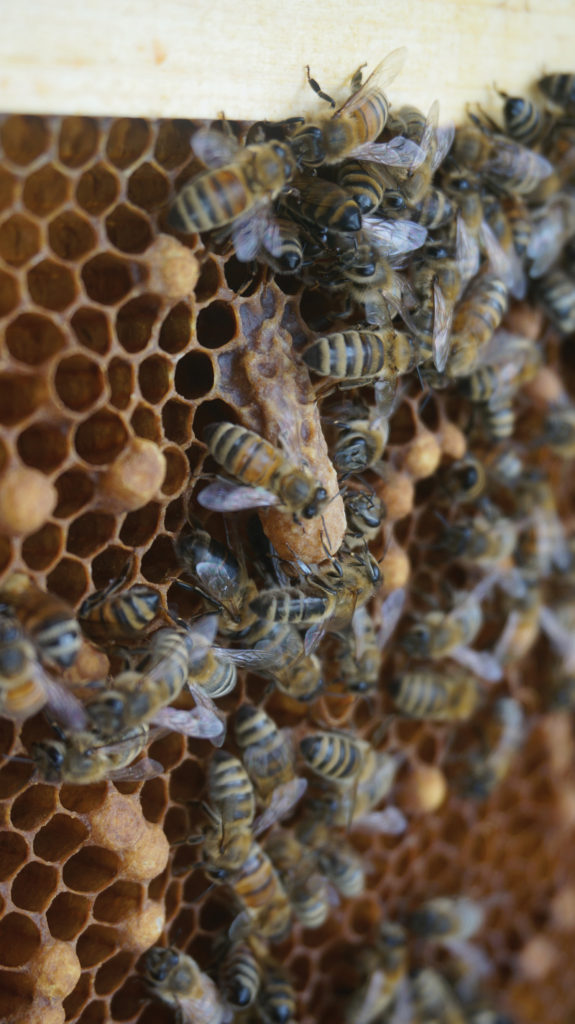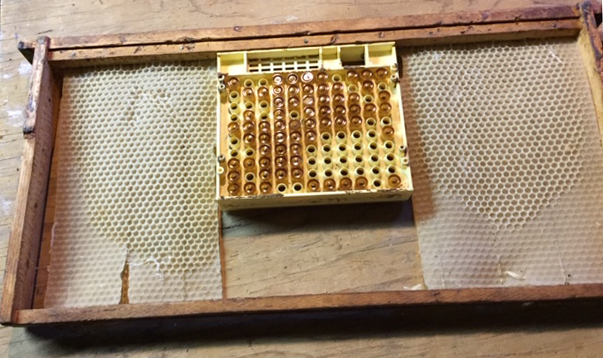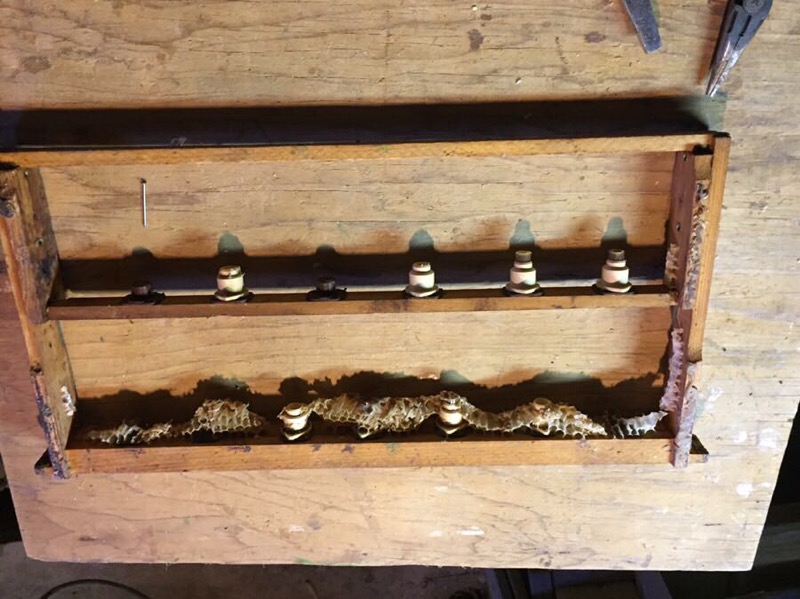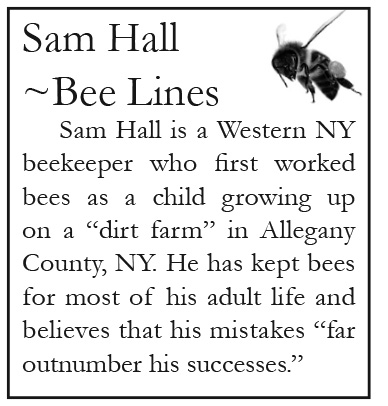Bee Lines: Queen Rearing 101
by Sam Hall –At this time of year as a beekeeper, it is hard to contain my excitement that after our long winter spring is arriving and with it those temperatures that are going to allow the bees to be out and about. They already have been out off and on as the temperatures rise to above 45 degrees, which seems to be the temp that my bees require to get out of the hive and start looking around.
This is the time to also start thinking about what you might want to accomplish in the apiary in addition to keeping your bees simply alive, though that will always be at the foremost concern. If you have more than one colony you should consider raising a few of your own queens. The queens you produce will be better than any that you can buy. They will be born in the mini-ecosystem that is your bee yard.

The Miller method
The easiest way to raise a few queens is the old Miller method. Take a frame of undrawn foundation and cut the foundation so there is three points facing downward like
saw teeth, without the points of the teeth touching the bottom of the frame. Put this frame into the center of the colony that you have your best queen in, which usually will be your strongest colony. The bees will fairly quickly draw out the comb and the queen will lay eggs in the newly drawn comb. Take a look every few days to see how things are going.
At this point select another one of your other colonies to be made queenless or set up a queenless nuc. As soon as you see fresh eggs in the saw shaped comb, make either the colony or the nuc queenless for 24 hours and then put in the saw-toothed frame with the fresh eggs on it. The bees very quickly realize they are queenless and will welcome the frame with fresh eggs. In about a week or less the bees will have built 3 or more queen cells along the edges of the saw like teeth comb.
Make up queenless nucs or splits for as many queens that you want to have. This method can produce easily three to five queens. The queen cells will be sealed about 8 days after the eggs have been laid. Wait until day 11 or 12 and very carefully cut the queen cells off of the comb. To me this is the part of this process that is the most difficult using the Miller method.
It is very easy to damage a queen cell removing it from the surrounding comb. I have tried using an Exacto knife, a surgeon’s scalpel and fishing line. None really are perfect. Once a cell is even slightly damaged it is useless. If possible have a friend help because having someone hold the frame while you remove the cells can be the difference between success and failure. Because of this part of the procedure, I no longer use this method.
Put the cells into your queenless colonies or nucs and wait for nature to complete the process of producing a mated laying queen. The queen will emerge on or about the 16th day after the egg was laid. The mating of the virgin queen occurs when she flies to a drone congregation area, which will happen a few days after she has emerged. Remember she is an insect with an ecto-skeleton, which must dry before she can fly. In a later note I will talk more extensively about the mating process, which is nature at it’s best to insure the survival of a species.
The beauty of the Miller method is that no special equipment is required and you don’t need numerous colonies. If you have never raised queens it is a good place to start.
The Nicot box method

Below: Once the queen has laid eggs in the cups, they are removed and are placed into a holder frame that is placed into a queenless colony. Photos courtesy Sam Hall.
The Nicot box method is my preferred queen rearing system. The picture of my Nicot box shows the box surrounded on each side by primarily drawn comb. You can get the box from any bee supply house. You then adapt your own frame for the box as shown. Plastic queen cell cups are placed on the back of the box so they are held in place by the back piece.
After you have placed all of the queen cups in the box then leaving the front of the box off, place it in the colony for 24 hours so the bees can really clean it, which they will. Then place the front of the box on. It has a hole at the top so you can put the queen into the box. After you have placed the queen in the box return it to the colony and wait 24 hours then check to see if she has laid enough eggs into the queen cups for your purposes. If not, wait another 24 hours. I have never had to wait more than 48 hours to have as many eggs as I want. I would never leave the queen so contained for more than 48 hours, as it will slow down the production of brood for the colony.

Now simply transfer the egg filled queen cups into the cell holders on the holder frame as shown and place in a nuc or colony that has been queenless for at least 24 hours. The bees will draw out the elongated queen cells allowing for the lengthy abdomen of the queen as she develops. As in the Miller method, on or about the 11th or 12th day put the capped queen cells into the queenless colony or into mating nucs. If you have to leave them after the cells are capped put cell guards over them as if one of the queens should emerge a little early, she will sting the other queens to death in their cells.
The Nicot method has never failed to produce the queens I need. I time the emerging of the queens so it is after the summer solstice because for reasons I do not know it appears to be true that queens emerging after the summer solstice have a better chance of making it through western New York winters.
There are numerous videos online that you can look at to ascertain which method you want to use. To me raising my own queens is one of the real moments in beekeeping. As I now am entering my 85th year I do not understand why I am still in awe when I pull a frame of brood covered with bees out of the hive and hold it up to the sun.
I think it is perhaps that at that moment I am in touch with the Universe.
